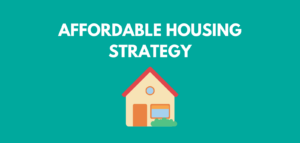Towards A New Housing Strategy- An Act Community Conversation
Introduction:
This paper is the next step in a journey to developing a new Housing Strategy. In embarking on this journey, the Government has invested heavily in reviewing its current and previous efforts on delivering social and affordable housing, has engaged with select local and interstate leaders in the industry and community sectors, and has reached out to a select few with real life experience of the current challenges of finding secure, affordable housing in the Territory. The lessons learned have been extensive and have reconfirmed that while some real progress has been made, the future focus must be on assisting those who need it most—those who are experiencing homelessness or low income households experiencing housing stress.
These households are our focus. In order to start the wider community conversation, the Affordable Housing Advisory Group has endorsed four broad goals for you to consider and respond to reducing homelessness, strengthening social housing assistance, increasing affordable rental housing and increasing affordable home ownership. The potential reforms and options outlined in this paper are clustered under these goals but the conversation need not be limited to these. It’s time for fresh thinking and to identify real, practical ways to improve the housing prospects of low income Canberra residents. Your response to this discussion paper will be brought to the October 2017 Housing and Homelessness Summit before being considered as part of the Government’s new Housing Strategy.

Different priority households need different solutions:
In discussing a way forward on housing affordability, the Affordable Housing Advisory Group endorsed four broad goals in the context of the Territory’s lowest income earners:
1. Reducing homelessness
2. Strengthening social housing strategy
3. Increasing affordable rental housing
4. Increasing affordable home ownership
Analysis of the current circumstances of all 60,000 households within the lowest two income quintiles makes it clear there are a number of different priority groups requiring different solutions within these four goals. This paper suggests options to address the different challenges faced by these low income groups to help them achieve a secure affordable home.
Reducing Homelessness:
Reducing homelessness is a key commitment of the Government. Homelessness is a complex issue, but is usually a symptom of wider issues that people face including family breakdown, domestic violence, housing affordability, mental health, drugs and alcohol or financial pressures such as a loss of job or income. A safe, secure, affordable house and often support services are needed to help individuals and families overcome or deal with these problems.
Introduce an innovation fund to facilitate new affordable housing strategy. The Government has committed to the establishment of an innovation fund to support creative design and finance options to help deliver affordable housing.
Strengthening Social Housing Strategy:
For some households—particularly those earning the lowest incomes and in need of additional support— home ownership or private rental may not be a viable option. These households will continue to rely heavily on the social housing strategy net provided by public housing and community housing providers.
Increasing Affordable Rental Housing:
The ACT has one of the most expensive rental markets in Australia. Relative to the rest of Australia, the ACT has higher levels of public housing but lower levels of community housing.
With public housing stock used for those households in the greatest need, there is a group of households that is not eligible for housing supports and is ‘squeezed’ by tight rental markets and limited lower-cost rental properties.
Increasing Affordable Home Ownership:
Home ownership continues to hold a special place in the Australian psyche. The purchase of a home is the largest investment most people make. Australians frequently view a mortgage as ‘good debt’, as purchasing a home allows households to avoid paying ‘dead rent’, provides for a form of enforced saving and is seen as a prudent investment that will appreciate over time.
Examples of innovative approaches include housing delivered under the Nightingale housing model, the Home share program that matches home owners with persons in need, and the not-for-profit Home Ground Real Estate model. The funding commitment under such a fund is to be determined but could be financed through:
» an annual ACT Government budget appropriation
» contributions from the private sector
» a developer in lieu of providing some or all of the required number of affordable housing units.
Conclusion:
Housing is an important enabler and foundation for full and active participation in the social and economic life of our community. For many years the ACT Government has recognized the importance of suitable housing to deliver whole of life outcomes through the Affordable Housing Action Plan, and provision of significant public housing and housing assistance.
It is now time to bring the ACT Government’s housing investment into the development of a new strategy to build upon our achievements, and to refocus and retarget efforts to those on the lowest 40% of incomes.
Also Read: Low-Income Housing Finance in Colombia
